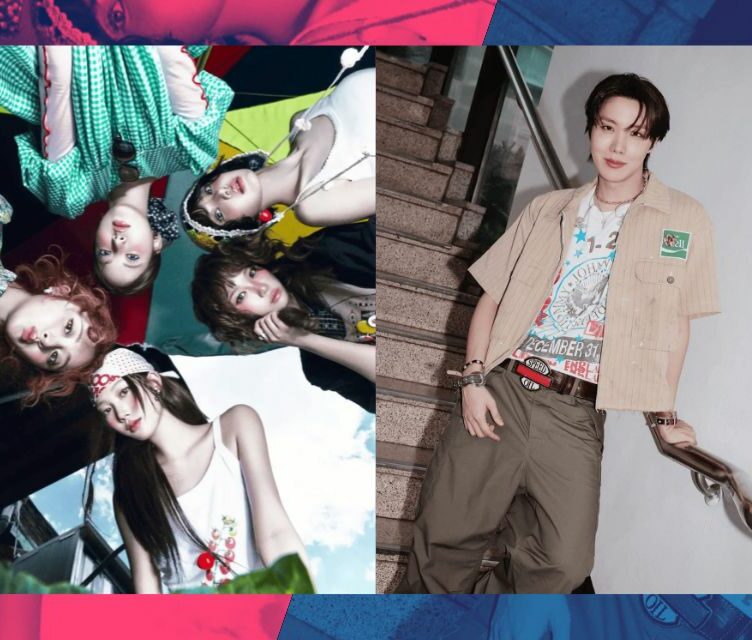THE 2025 midterm elections are fast approaching, highlighting the importance of addressing and decoding misinformation and disinformation, particularly on social media platforms.
The emergence of technology and media has intensified the production of false information, often being used as an avenue for propaganda, satire, and disinformation campaigns. The increasing number of internet users also raises the potential risks of encountering misleading content, posing a significant challenge to Filipinos who often struggle to identify credible information online.
“Recently po nag-conduct kami ng survey at lumabas po ro’n sa survey, unfortunately, 9 out of 10 Filipinos na po ang either nabiktima ng fake news or feel that it’s a problem in their everyday interaction with information, with media,” said by Emerald Ridao, Communications Undersecretary for Digital Media Services of The Presidential Communication Office, during an interview with PTV Philippines. Alarmingly, she also added that the issue primarily affects young people.
Generation Z, known for being digital natives are either the victims or the ‘hope of the future’ in combating misinformation and disinformation, especially during the election period.
Identifying Misinformation and Disinformation
Despite misinformation and disinformation causing potential harm to people and society, they differ from each other.
Disinformation involves the intentional dissemination of false content to mislead audiences, whereas misinformation refers to the unintentional sharing of inaccurate information.
With the rapid spread of information during the election period, several factors are contributing to these challenges.
Khate Pauline Baylosis, 20, thinks that emotions and biases during election periods tend to fuel the spread of misinformation. “Sa Pilipinas, marami pa rin naniniwala [sa fake news] at matindi ang pagiging maka-idolo ba— kaya kung sino na lang ‘yung ‘subok na’, ayun na ang paniniwalaan hanggang dulo at talaga ipaglalaban nila ‘yun, kahit madalas ang mga subok ay wala naman talagang naitulong.” she explained.
Meanwhile, Eirene Manatlao, 21, associate feature editor of The Catalyst, a publication from the Polytechnic University of the Philippines, further argues that fake news peddlers often have political affiliations. She mentioned that they utilized social media platforms to promote their agenda which may involve negative, harmful, and malicious intent. “Kailangan kasi nilang maka-secure ng voters and kailangan nilang mag-gain ng traction online, and social media is a cheaper way para maka-reach ng wider audiences,” she added.
Additionally, the casual sharing of unverified content without careful consideration also contributes to the problem. Many individuals tend to associate only with like-minded peers, restricting their exposure to different viewpoints.
Furthermore, some social media companies lack sufficient measures for monitoring and fact-checking content, leaving users vulnerable to influencers and content creators who may propagate false information.
Thus, it has become essential to develop the skills necessary to distinguish factual and fabricated materials, enabling the public to make informed decisions consistently.
How Gen Zs decode false information
To gain insight into how Gen Zs identify and decode false information online, Republicasia asked Gen Zs about the red flags they watch out for, and the different strategies they employ to assess the credibility of the information they come across online.
In spotting the red flags, the common indicators that alert them include:
- Sensationalized captions, headlines, and visuals.
Exaggerated or eye-catching captions often suggest the presence of fake news. Gen Zs said that these intriguing headlines and captions are often used to gain their attention. They also frequently notice a disconnect between these headlines and the actual content when they click through the link provided in the posts.
- Questionable sources
If the account is unverified or mimics legitimate sources, for Gen Zs, it could indicate a potential platform for spreading falsehoods. A post lacking a citation or references, also raises a red flag for them. They are cautious about them, especially if the information is heavily loaded with claims but has insufficient evidence.
- Spliced videos
Many Gen Zs can easily identify edited videos or those that appear artificially modified, particularly when the audio and visuals are inconsistent. They usually notice them on accounts promoting misleading products and services or political agendas.
In decoding false information, the common strategies they use include:
- Utilizing algorithm
Social media platforms often offer algorithms, which help users to tailor the content they want to see according to their interests. When utilizing this algorithm, Gen Zs tend to build up their feeds by engaging with credible sources and content creators, and topics they would like to see in their daily consumption.
- Using reliable sources
To be an informed generation, it is also important to follow reputable sources such as media companies, academic institutions, and established organizations. For them, using search engines and domain extensions (e.g. edu.ph, gov.ph, and org.ph) can assist them in filtering content and evaluating the credibility of the information.
- Fact-checking and cross-checking of sources
Before sharing information, Gen Zs also utilize fact-checking tools and websites that specialize in verifying the credibility of the content and claims. Cross-checking also helps them analyze information from different sources, providing them with a comprehensive understanding of the topic and assessing its quality.
- Peer-talking
Engaging in critical and engaging discussion with friends often gives them different perspectives. It also enables them to collectively debunk false narratives and analyze them together.
What can Gen Zs do?
In addition to their existing strategies, the Philippine Institute for Development Studies further explains how Gen Zs can address misinformation. By practicing:
- Critical thinking skills
Critical thinking skills are crucial in identifying and handling false information online. By questioning the validity of information, examining the way it is written, and considering the intended audience, you can effectively investigate the motivation and message behind the information.
- Media and news literacy education
Developing media and news literacy skills will equip Gen Zs with the proper and effective approach and tools for evaluating sources and materials. By recognizing media formats and biases, you can develop an analytical practice in consuming information. Besides, you can also participate in advocacies and campaigns regarding media and news literacy programs in your school and community to further enhance your ability to navigate misinformation.
- Approaching the fight against disinformation and misinformation as a duty to society and a moral obligation
The public should recognize disinformation and misinformation as a common enemy that they are responsible for combatting. By adopting this mindset, they can become more mindful of their actions on social media.
This involves considering the potential impact of their own posts and shares, reporting false information, and helping to educate others on how to discern deceptive content online.
Being ‘tech-savvy’ gives Gen Zs an extra advantage to notice misinformation and disinformation online. Therefore, it is crucial for them to enhance their ability and skills, equipping them to navigate the digital landscape more effectively and responsibly.
Gen Zs leading the fight
Every account in social media can serve as a platform for change. It is crucial for users to take a proactive approach to promoting truth and debunking false information. Every post can either build or break trust, and every vote can significantly impact society.
“Nasa digital age na tayo ngayon and it’s better na marunong tayong maghandle kung paano siya gamitin ng maayos— responsibly. Since democratic ang bansa natin, meron tayong power. Nasa atin ‘yung bola, so we might as well improve ourselves para magamit natin siya sa tamang paraan at para mailuklok ‘yung tamang mga tao sa posisyon,” Manatlao said.
Raffy Patrocinio, 23, feels a strong sense of responsibility to act and stay informed as a tech-savvy. He advises other Gen Zs to consistently read, fact-check, and double check information, rather than easily trusting what they see online. “Mas may alam tayo kumpara sa ibang henerasyon. We are born in an era where technology is advanced, kaya dapat mas gamitin natin ito ng tama,” he stressed.
Baylosis expressed that she is “very, very optimistic” about Gen Z’s capability to effectively combat false information. She has noticed that people nowadays are increasingly open to educating themselves and others about various societal issues. “While we may not eliminate it overnight, we have the potential to create a more informed society. With our collective efforts, we can work toward the society we’ve always dreamed of,” she mentioned.
She also emphasized the need for accountability in spreading misinformation, regardless of the intent or personal relationships, especially if it could impact others. “I believe my friends would also hold me to the same standard if ever I made a mistake such as spreading misinformation,” she added.
However, Manatlao is leaving some space for improvement when it comes to Gen Zs ability to address false information. “Andun pa rin ‘yung room for improvement na sana mas dumami pa sa mga kabataan ‘yung maging kritikal sa pagsusuri ng information nila, and learn on their own kung paano mag-fact check, maghanap ng credible sources, kasi that is all for creating a better informed society. Para rin ‘yan sa kanila, para rin ‘yan sa future,” she remarked.
With their digital literacy, critical thinking skills, and being an advocate for a better society, Gen Zs have the potential to lead the fight against disinformation. They can foster this generation and the next generation in promoting truth and making informed, empowered choices for the upcoming election and society.
With reports from Ashly Mae Nabus
How useful was this post?
Click on a star to rate it!
Average rating 0 / 5. Vote count: 0
No votes so far! Be the first to rate this post.
We are sorry that this post was not useful for you!
Let us improve this post!
Tell us how we can improve this post?








